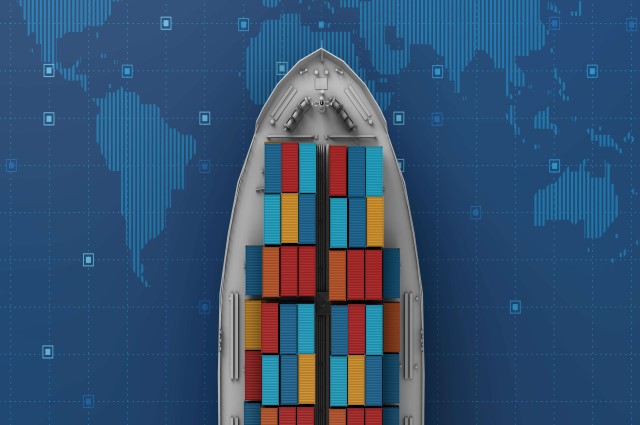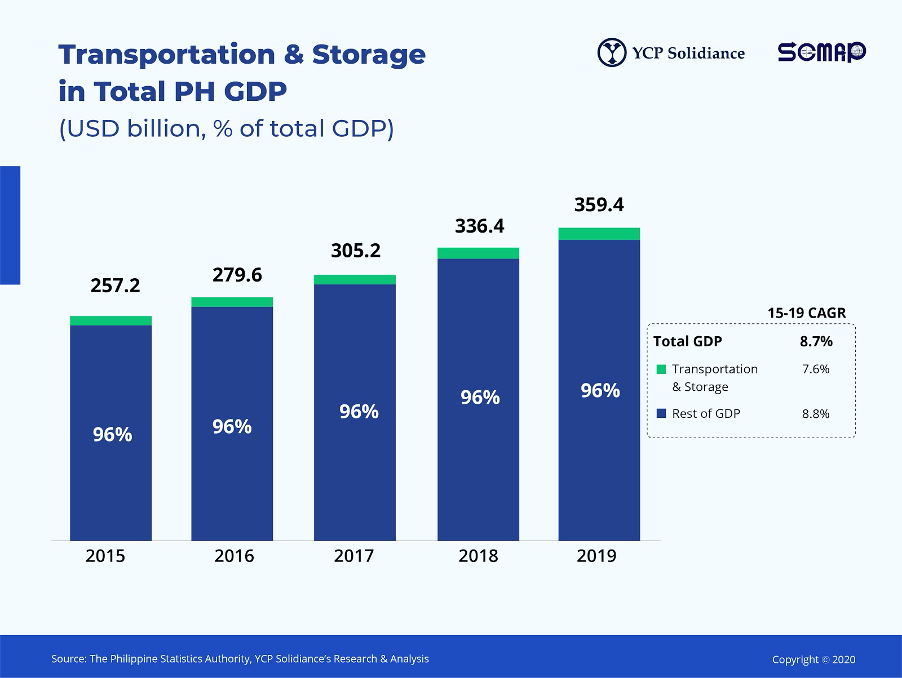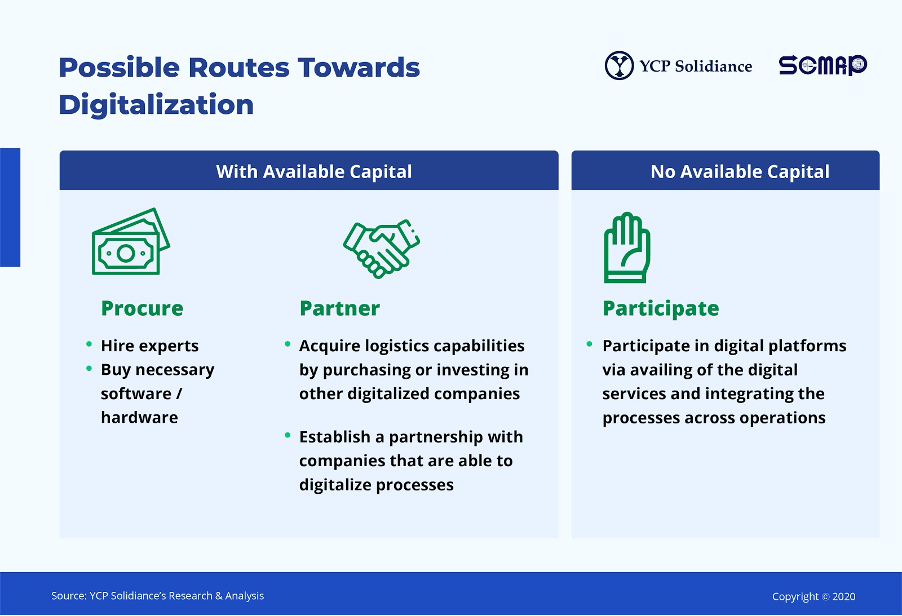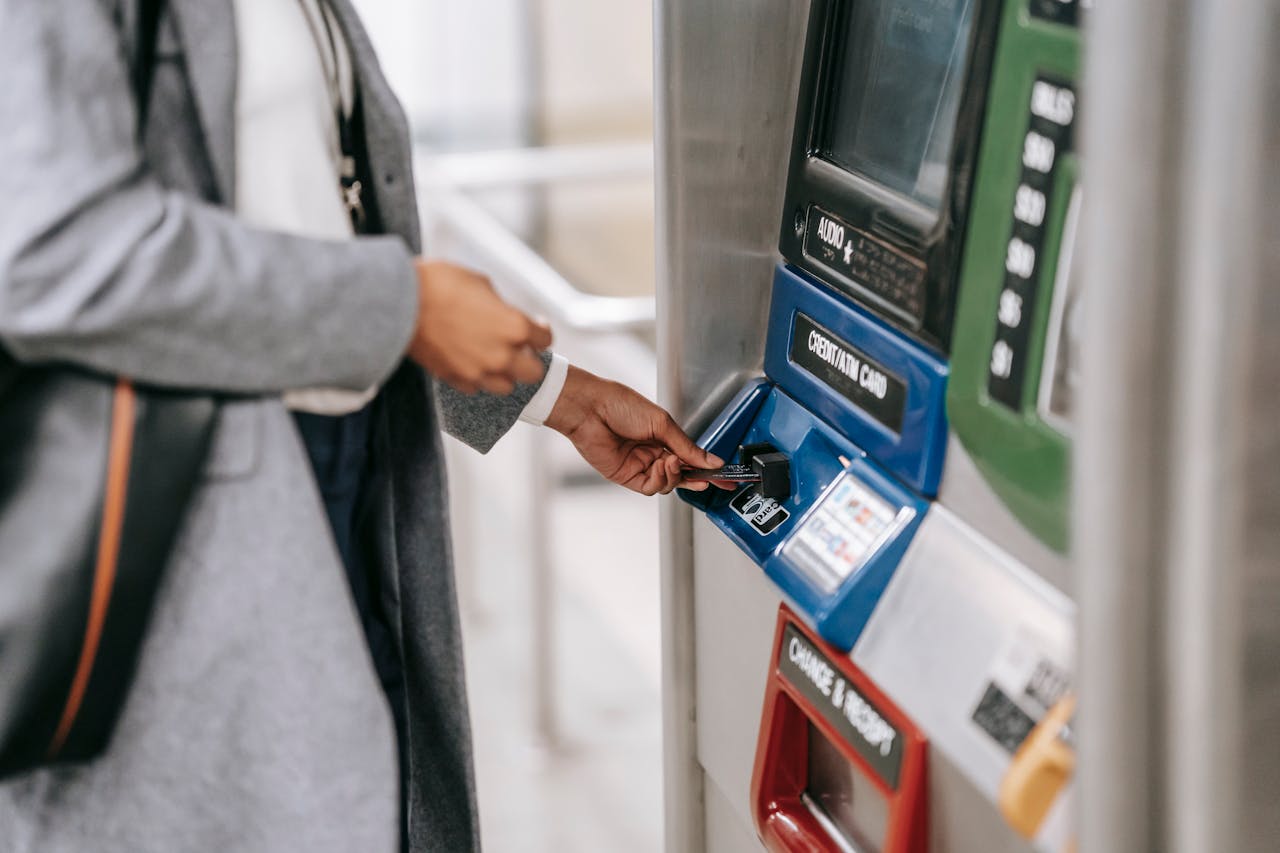

The transportation and storage segment has always been a significant component in the Philippine economy, summing up to USD 13 billion in 2019. It has accounted for around 4% of GDP over the last five years. With a lot of room for growth, digitalization is crucial to bring this industry forward, as highlighted in the latest white paper by YCP Solidiance titled “Digitalization in the Philippine Logistics Industry”.

Various businesses in the Philippines need to face some issues or challenges when trying to deliver goods around the islands, despite the countries’ development of transportation infrastructure. These problems are.
The traffic congestion in this region is getting worse. This condition will, of course, hinder the flow of goods in and out of the area. It is predicted that if the government does not do anything about it, the country will lose US$ 106.4 million daily by 2023.
Various businesses in this country still employ manual processes to deliver goods that take longer lead times and cause an inefficient flow of goods. Through this traditional practice, companies will not provide order transparency for the customers that will result in unhappy customers.
Many importers are complaining about the length of time needed in performing custom clearance processes. In some cases, it takes 25 days for importers to complete this process due to the inefficient, traditional practice and unsatisfying crane productivity and yard utilization rates.

The white paper also suggests a single solution for the issues mentioned above - digitalization across the logistics industry. Few businesses already go digital, such as online shops (Lazada, Zalora, and Shopee) and logistics service companies (Ninja Van and Lalamove).
Both of them have successfully provided order transparency for their customers. They have proved that digitalization enables them to meet their customers’ demands, deliver goods effectively, and allow them to grow rapidly.
By going digital, Lalamove has grown at the level of 2000% in the last four years, 2016-2020. Also, digitalization can cut down the custom clearance processes up to 80% to take only five days or even less.
It can be concluded that digitalization can solve the philippine logistic industry’s issues and help businesses flourish. Businesses who want to apply this practice can follow one of the strategies below.
1. Hire experts or buy the required software and hardware to go digital.
2. Invest in or establish a partnership with digitalized companies.
3. Participate in digital platforms to integrate the digital processes into the businesses’ operations.
Once the issues above are solved, businesses in the Philippines will gain a momentum of rapid growth. It is why the logistics industry needs to go digital.
Source: https://ycpsolidiance.com/white-paper/digitalization-in-the-philippine-logistics-industry

Leading the Charge: Major Players in SEA’s Digital Lending Market
The fintech lending market in SEA is poised for substantial growth, including digital lending which is set to surpass digital payments as the primary revenue driver for the region's digital financial services sector by 2025, with a compound annual growth rate (CAGR) of 33%. This growth is fueled by the widespread adoption of automated loan origination processes and the seamless integration of financial services into digital platforms.

Unlocking Opportunities in the SEA Digital Financial Services Landscape
In recent years, Southeast Asia (SEA) has emerged as a hotbed for fintech innovation, transforming the financial landscape across its diverse markets. This transformation is characterized by a surge in digital financial services (DFS), revolutionizing how individuals and businesses manage their finances. However, the journey is not without its challenges, and understanding these is crucial for stakeholders aiming to navigate this rapidly evolving sector.

How SEA Startups are Navigating Funding Challenges
The startup ecosystem in Southeast Asia (SEA) has long been a vibrant hub for innovation and growth. However, recent global economic shifts and the aftermath of the COVID-19 pandemic have ushered in a new era of funding challenges.

Challenges for Sustainable Recovery in Southeast Asia
Sustainable recovery in Southeast Asia faces numerous challenges, yet also presents significant opportunities for green growth. Addressing sustainable issues is crucial for achieving a resilient and sustainable future.